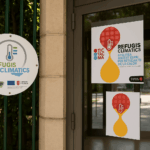Tunisia is going through a severe food crisis, exacerbated by the scarcity of certain essential products, notably bread, an essential staple for Tunisians. Every day, endless queues form in front of bakeries, reflecting an alarming situation.
The main cause of this crisis is climate change, marked by a significant reduction in rainfall. In 2022, national durum wheat production stood at 6.758 million quintals. By 2023, it had fallen to 2.924 million quintals. This drastic drop comes against a difficult economic backdrop, with the international wheat market in the throes of major disruption, largely due to the conflict between Russia, the world’s leading wheat exporter, and Ukraine, fourth on the list. The consequences are immediate: paralyzed exports and soaring prices on the world market.
In this context, more and more voices are being raised, particularly among farmers and civil society activists, to promote a return to the cultivation of local varieties of Tunisian durum wheat. However, the term “original” used to describe these varieties is scientifically questionable. Indeed, a wheat variety grown in the same place for over 100 years and subject to the same conditions becomes de facto local.
What are the advantages of local varieties?
Local wheat varieties are conserved at the Banque Nationale de Gènes (BNG), which has managed to collect them over the last 20 years in partnership with international research organizations such as CYMMYT (Centre International d’Amélioration du Blé et du Maïs) andICARDA (International Center for Agricultural Research in the Dry Areas). These varieties are available to any farmer wishing to grow them, with the guarantee of their purity and cleanliness, all the more so as they have a high nutritional value.
However, the height of the stem, sometimes reaching 180 cm in some varieties, poses a real challenge. This characteristic complicates harvesting and phytosanitary treatment, as agricultural machinery is not adapted to handle such lengths. Moreover, stem height has a negative impact on yield, as a plant cannot simultaneously offer good yield and a long stem. The current aim is to increase production while minimizing financial costs.
What are the origins of the varieties currently used in Tunisia?
The process of creating the varieties currently grown in Tunisia is a lengthy one, dating back to the 1960s. Farmers castrate wheat flowers, removing the outer membrane and pollen grains, and then fertilize the female flower with pollen from another variety. This totally natural process involves no genetic modification of the varieties, ensuring that the wheat grown is not GMO and poses no danger to health.
Researchers have crossed over 4,000 types of wheat to produce hybrid varieties that combine the qualities of old varieties with higher productivity and better resistance to fungal diseases. Varieties such as Maali, Razak and Dhahbi in Tunisia are the fruit of this work. They are highly productive, adapt well to difficult climatic conditions, produce fertile ears, and are resistant to the main diseases, notably fungal.
However, these modern varieties also have their drawbacks: they consume a lot of nutrients and organic matter from the soil, are susceptible to salt and other non-fungal diseases, and make farmers dependent on getting seed every year.
A necessary change to ensure our food security
In the face of Tunisia’s current food crisis, it is clear that immediate and strategic action must be taken. Returning to local durum wheat varieties may seem an attractive solution, but it’s crucial to understand that it’s not enough to solve the structural problems of our agriculture.
The reintroduction of these local varieties, while enhancing our agricultural heritage, must be accompanied by measures to modernize growing and harvesting techniques. For example, investing in research and development to adapt farming equipment to the specific characteristics of these varieties could help overcome the challenges of stem height and pest management. In addition, particular attention needs to be paid to soil management, as crop sustainability depends on our ability to maintain fertile, balanced soils, despite the intensive exploitation of nutrients by these varieties.
At the same time, farmers’ increasing dependence on hybrid seeds and their inability to produce their own seeds year after year raises fundamental questions about the country’s food sovereignty. To reduce this dependence, it is essential to promote farming practices that encourage the conservation and reuse of local seeds, while guaranteeing their quality and purity.
But beyond the purely agricultural aspect, what is needed is a genuine transformation of eating habits. Tunisians and political decision-makers alike must recognize that food security cannot be based solely on the intensive cultivation of a single cereal. It is imperative to diversify food sources and reduce dependence on durum wheat by integrating other cereals, legumes and local foods into the daily diet.
Finally, the current crisis should serve as a catalyst for a more global reflection on the resilience of our food system in the face of climatic, economic and geopolitical challenges. The adoption of more sustainable agricultural and food policies, in line with current environmental realities, is essential. This means not only supporting farmers in the transition to more sustainable practices, but also educating consumers about the importance of their food choices for the future of food security in Tunisia.
In short, it’s clear that the solution to Tunisia’s wheat crisis lies not just in the past, nor in a simple return to local varieties, but in an integrated approach that combines tradition and innovation, to build a resilient and sustainable agricultural future.














